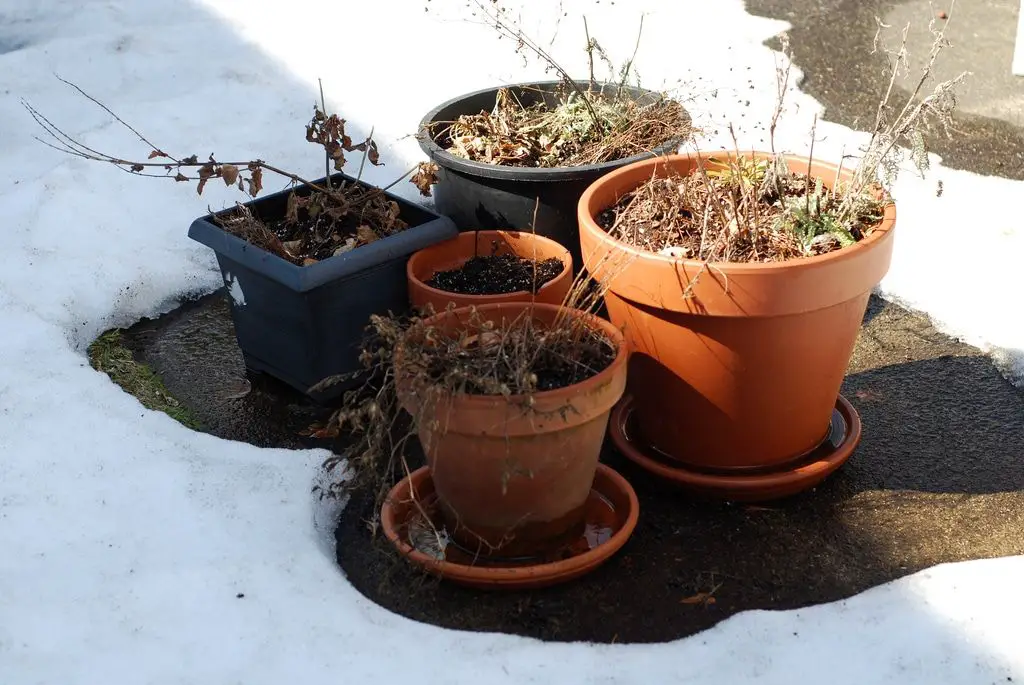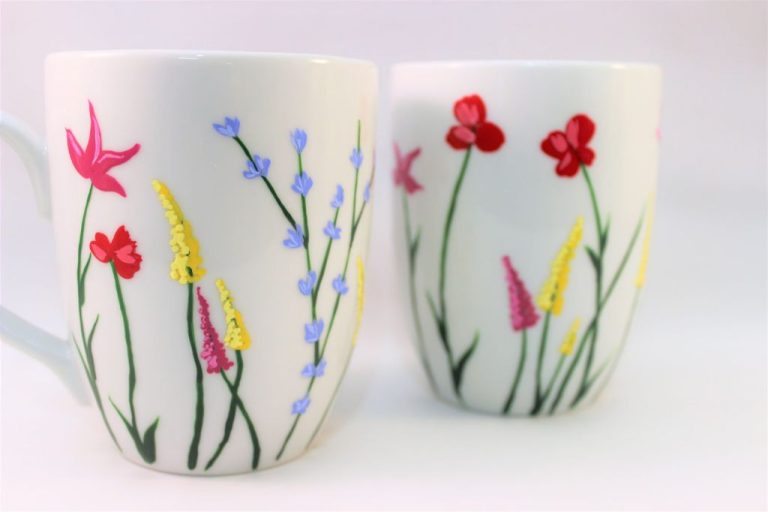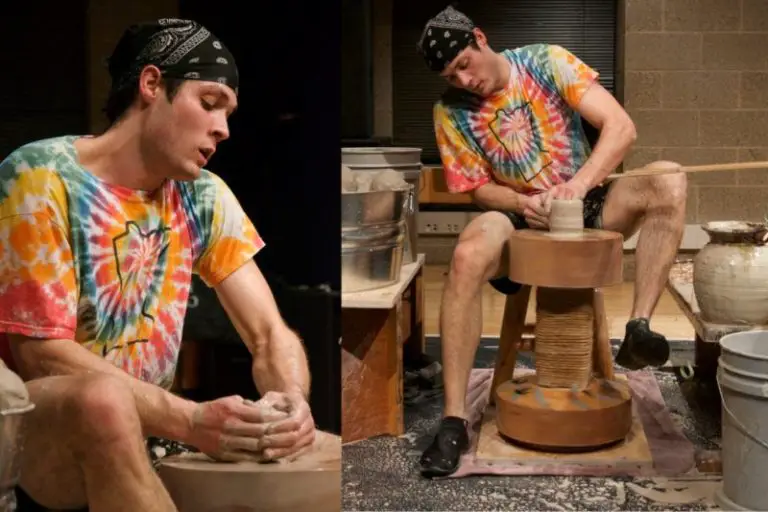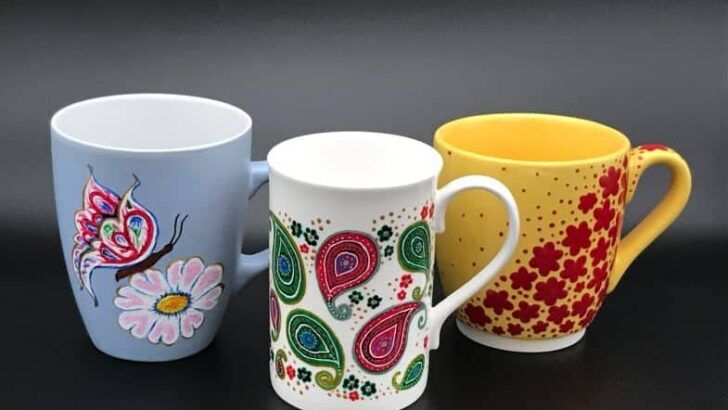What Plants Should Not Be In Terracotta Pots?
Terracotta pots are a popular type of container for growing plants. They are made from natural clay that has been fired at high temperatures. Terracotta is porous and allows air and moisture to pass through the walls of the pot. This can help prevent overwatering and soil staying too wet. However, the porosity also means terracotta pots dry out faster than other materials like plastic or ceramic.
The clay used to make terracotta pots also has some unique properties. It is slightly acidic, so over time minerals can build up and make the soil more alkaline. Terracotta is reactive and absorbs minerals and salts from both soil and water. The reddish-orange color of terracotta pots comes from iron oxide in the clay. Terracotta is also more brittle than other materials and can crack from temperature changes or if handled roughly.
While terracotta pots have benefits like air pruning roots and wicking away moisture, they also have drawbacks like fast drying and potential mineral buildup. Not all plants thrive in terracotta’s environment, so gardeners should consider both the advantages and disadvantages when selecting containers.
Plants that Dislike Dry Soil
Terracotta pots allow soil to dry out quickly, which can be problematic for certain types of plants that require consistently moist soil. Succulents and cacti in particular do not thrive in terracotta pots, as they have adapted to thrive in arid environments and need soil that dries out between waterings.
Succulents store water in their leaves, stems, and roots, allowing them to survive long periods of drought. However, too much moisture can lead to rotting. Cacti have modified stems that serve as water storage organs. They are found in desert climates and sandy soils that drain rapidly.
For succulents and cacti, terracotta’s porous material leads to excessively dry soil even when watered regularly. Their specialized water storage systems are not able to compensate for such arid conditions long-term. Slow, infrequent watering is recommended, which is difficult to maintain in terracotta.1
Instead, succulents and cacti thrive when planted in containers that retain moisture, such as glazed ceramic or plastic pots. These materials slow soil drying and better match the water needs of these drought-tolerant plants. For those seeking a natural clay look, concrete containers are a suitable terracotta alternative.
Plants with Delicate Root Systems
Orchids and African violets are two types of plants that have very delicate root systems that can be easily damaged in terracotta pots.
Orchids have aerial roots that require a lot of moisture and humidity to thrive. The porous nature of terracotta pots means the roots can dry out very quickly, which can damage and kill the delicate roots of orchids (Source). Orchids do best in pots that retain moisture like plastic, glazed ceramic, or moss lined baskets.
African violets also dislike terracotta pots because their tiny hair-like roots need constant moisture. If the roots dry out even a little, it can wilt the entire plant. The porous terracotta pots will cause the soil to dry out too fast for the sensitive roots. African violets do better in glazed pots that keep moisture more consistently (Source).
Plants Prone to Mineral Buildup
Certain types of plants are more prone to mineral buildup when grown in terracotta pots. The porous nature of terracotta allows minerals and salts from water and fertilizers to accumulate on the exterior and interior walls of the pot over time. When the water evaporates through the pot, it leaves these mineral deposits behind.
Two plants that are especially sensitive to mineral buildup in terracotta pots are junipers and rhododendrons. Junipers prefer fast drainage and their roots can be damaged by the accumulation of minerals like calcium and magnesium (https://www.thesill.com/blog/calcium-buildup-on-planters). The acidic soil preferred by rhododendrons can react with the minerals in hard water, changing the soil pH over time. This can lead to nutrient deficiencies in rhododendrons when grown in terracotta pots.
To prevent mineral buildup, consider using distilled or rain water for these plants rather than hard tap water. You can also place a liner or small layer of pebbles at the bottom of the terracotta pot to create a barrier between the water and the terracotta walls. For severe buildup, white mineral deposits can be removed by scrubbing the pots with vinegar or lemon juice (https://www.mrhouseplant.com/blog/how-to-remove-white-residue-from-terracotta-pots/).
Plants that Need Consistent Moisture
Certain plants require consistently moist soil and do not thrive in terracotta pots, which allow the soil to dry out more quickly. Ferns are a prime example, preferring damp conditions and struggling in terracotta containers where the soil moisture fluctuates frequently.
Calibrachoa, also known as million bells, is another plant that needs moist soil. Its small, delicate roots have difficulty absorbing enough water from drying terracotta potting mix. Calibrachoa grows best when kept evenly moist, but not soaked, which can lead to root rot. Terracotta’s porous nature makes maintaining optimal soil moisture a challenge for this thirsty plant.
Other moisture-loving plants that tend to underperform in terracotta pots include begonias, impatiens, and coleus. The free-draining properties of terracotta pots cause the soil to dry out too rapidly between waterings for these plants. Their shallow root systems thrive with consistently damp soil. Opt for glazed ceramic or plastic containers instead to maintain moistness for these water-loving plants.
Sources:
https://www.gardeningknowhow.com/houseplants/hpgen/plants-that-need-constantly-moist-soil.htm
https://www.gardendesign.com/plants/calibrachoa.html
Seedlings and Young Plants
Terracotta pots are not ideal for seedlings and young plants that have high water needs. The porous nature of terracotta causes soil to dry out more quickly than other materials like plastic or glazed ceramic (https://livingcolorgardencenter.net/gardening/the-dos-and-donts-of-terracotta-plant-pots/). Seedlings and young plants have small, delicate root systems that need consistent moisture while establishing themselves. If the soil dries out too much between waterings, it can stunt growth and even kill off new seedlings.
It’s best to start seedlings and young plants in plastic seedling trays or pots that retain moisture better. Once established, they can be transplanted into terracotta pots. However, the plants need to be monitored closely at first to ensure the soil is staying moist enough. Consider grouping terra cotta pots together to create a self-contained humid microclimate. Watering more frequently may also be necessary until plants mature.
Plants Sensitive to Temperature Fluctuations
Certain plants, especially those native to tropical or subtropical regions, can be sensitive to temperature fluctuations and cold shock. When grown in terracotta pots, these plants are more prone to damage during cold snaps or freezing temperatures. This is because terracotta is porous and transfers temperature changes rapidly from the environment to the root zone.

Two common garden plants that dislike temperature swings in terracotta are tomatoes and basil. Tomatoes prefer consistent warmth, around 70-80°F, for optimal growth and fruit production. If subjected to cold shock, tomato plants can experience stunted development, lower yields, and increased disease problems (1). Basil also thrives in warmer conditions, above 60°F, and grows poorly once night temperatures drop below 50°F. Sudden temperature drops can cause basil to bolt or flower prematurely.
To help tender vegetables and herbs survive cold spells, gardeners use strategies like cold frames, fabric row covers, or bringing potted plants indoors. For in-ground plants, using plastic or glazed ceramic pots can buffer root zone temperatures compared to unglazed terracotta. However, even cold-sensitive plants can thrive in terracotta pots during the warm growing season. Just provide extra protection when cold weather arrives.
(1) https://patuxentnursery.com/blog/choosing-the-right-pottery-for-plants-and-winter-care-tips/
Plants that Dislike Acidic Soil
Certain plants prefer neutral or alkaline soil and do not thrive when grown in acidic soil conditions. Acidic soils have a pH below 7.0. Some examples of plants that dislike acidic soil include:
Azaleas prefer a pH between 5.5 and 6.0. Growing azaleas in overly acidic soil can result in chlorosis, or yellowing leaves. To keep azaleas happy, amend soil with lime if needed to reach the optimal pH range. See this guide for more tips on growing azaleas.
Gardenias require a pH between 6.5 and 7.0. Acidic soils can cause gardenia leaves to turn yellow and cause stunted growth. Use a soil pH tester to check for acidity. If too low, add garden lime per package instructions to increase pH. Get more gardenia growing tips here.
Alternatives to Terracotta
While terracotta pots have some benefits, there are many other options that may be better suited for certain plants. Here are some of the most popular alternatives to terracotta:
Plastic
Plastic pots come in a huge variety of shapes, sizes, and colors. They are very affordable and lightweight. Plastic provides more moisture retention than unglazed terracotta. However, some types of plastic can degrade over time when exposed to sunlight. Look for UV-stabilized plastic if using outdoors.
Good plastic pot brands include Belden Plastics and Nursery Supplies Inc. Some plastic pots are made from recycled materials like milk jugs.
Ceramic
Ceramic pots are attractive, provide weight and stability for larger plants, and are durable. Glazed ceramic pots retain more moisture while unglazed terra cotta-style ones provide airflow to the roots. Ceramic comes in many styles from modern to traditional. The cons are ceramic pots are heavy and can crack if exposed to freezing weather.
Quality ceramic pot brands include The Pottery Patch, Campania International, and D’Vontz.
Self-Watering
Self-watering pots have built-in reservoirs that regulate water to the plant’s roots. This helps maintain optimal moisture levels. Self-watering pots are great for plants like orchids and tomatoes that need evenly moist (but not soggy) soil. They prevent problems with over and under-watering. However, they are generally more expensive than regular pots.
Top self-watering pot brands are Lechuza, Gardener’s Supply Company, and VidaXL.
Conclusion
Summary of plants unsuitable for terracotta pots: In this article we discussed various types of plants that are not well-suited for terracotta pots. This includes plants with delicate root systems like orchids, plants that require consistent moisture like calatheas and ferns, and plants that dislike the acidic soil and fluctuating temperatures in terracotta like tomatoes and basil.
The porous nature of unglazed terracotta allows moisture to evaporate quickly which can lead to dried out soil and drought stress in plants. The mineral content of the clay can also create an acidic environment over time. While great for some plants, others like African violets and succulents prefer their soil more alkaline. The thin walls of terracotta pots also provide little insulation against temperature changes.
Instead, plants that dislike dry soil and acidic conditions thrive better in plastic or glazed ceramic pots that retain moisture and nutrients. Being mindful of a plant’s preferences and requirements allows us to provide the best growing environment for healthy, happy plants.



